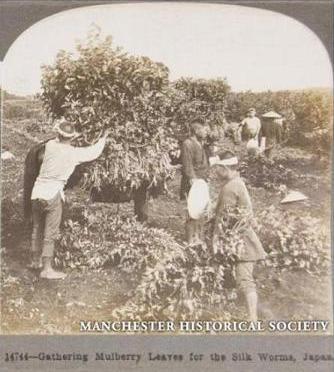



The appearance of a mulberry plantation has been likened to that of a vineyard in the Mediterranean region, where the vines are without supports. The trees can be propagated by seed, but are usually reproduced by means of cuttings and shoots. Grafting and budding are not practiced. The mulberry is a rapid grower, and when it is cut back to the stump like willows, it puts forth every year leafy shoots more than a metre long.
The tree is hardy and adapts itself to various climates and soils. It is found in Europe from the North Sea to Sicily, singly or in plantations; it was introduced from Aisa in 1540. In India and China it has been cultivated for its leaves for thousands of years. William Kenrick, about 1830, introduced the culture of the mulberry tree into the United States, at his father's gardens on the site of John Eliot's first preaching to the Indians; the tree is now found in a half wild state in some places, a foot or more in diameter.
In Syria the new leaves come out in March, in Japan in April, in Germany not till May. In this view the leaves are being carried home on the branches; in view

 )
)